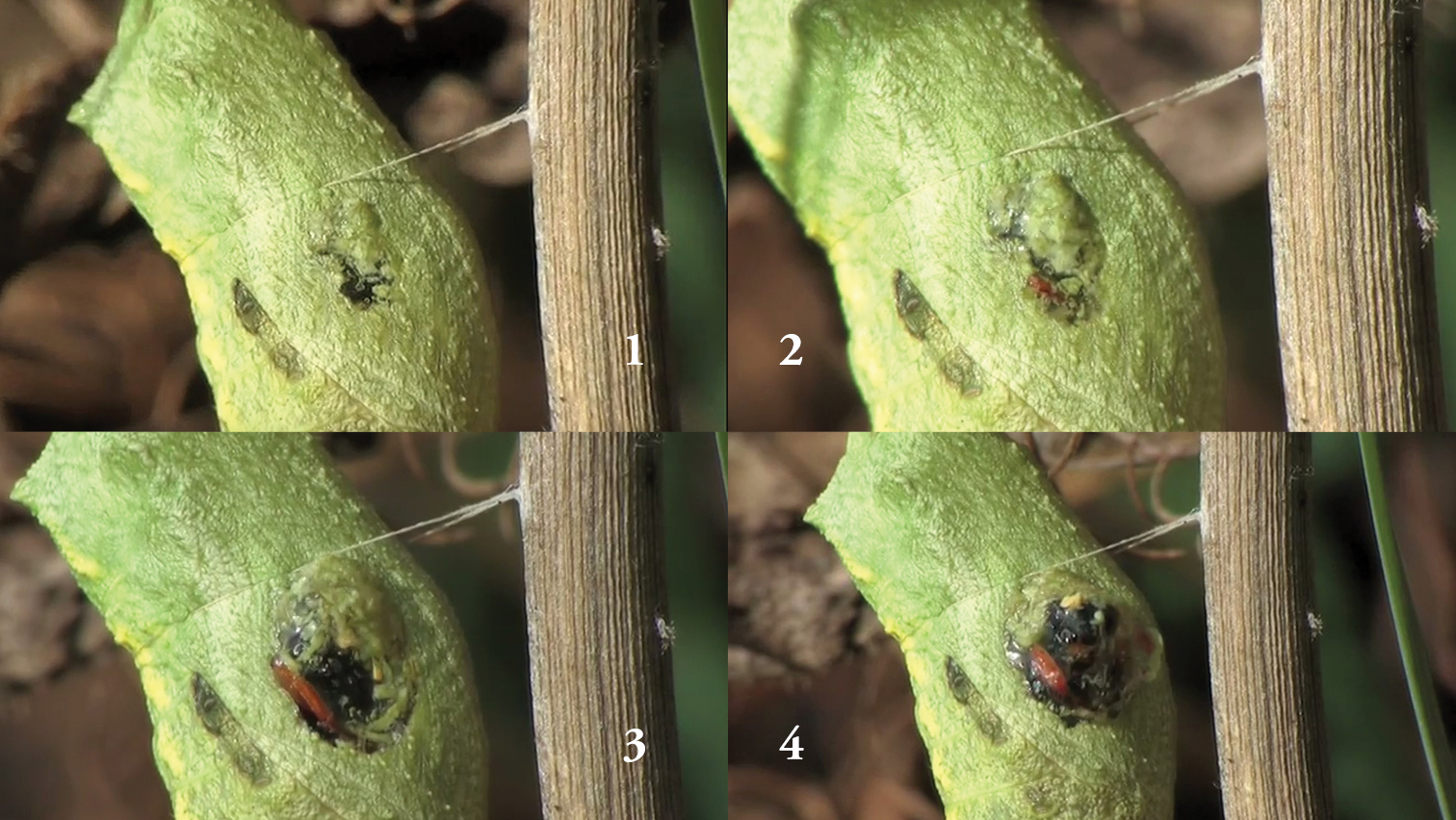Difference between revisions of "Template:Did you know nominations/Trogus (wasp)"
Jump to navigation
Jump to search

imported>Umimmak m (fix links) |
imported>Umimmak m (fix QPQ link) |
||
| Line 16: | Line 16: | ||
** '''ALT1''':... that parasitoid wasps in the genus '''''[[Trogus (wasp)|Trogus]]''''' lay eggs in caterpillars which often get collected by lepidopterists? <small>Source: "Because the host caterpillars are frequently collected and reared by amateur and professional lepidopterists, reliable host records permit confident identification of the host range."</small> | ** '''ALT1''':... that parasitoid wasps in the genus '''''[[Trogus (wasp)|Trogus]]''''' lay eggs in caterpillars which often get collected by lepidopterists? <small>Source: "Because the host caterpillars are frequently collected and reared by amateur and professional lepidopterists, reliable host records permit confident identification of the host range."</small> | ||
** '''ALT2''':... that while most species of the parasitoid wasp genus '''''[[Trogus (wasp)|Trogus]]''''' are found in North America, hymenopterists have proposed the genus originated in Eurasia? {{small|Source: "[...]North America, where most Trogus species occur [...] We propose further that a Palaearctic ancestor of ''Trogus'' followed the ancestor of the ''P. machaon'' group into North America, and fragmented subsequently into the North American species" {{doi|10.1111/j.1365-3113.2006.00329.x}}}} | ** '''ALT2''':... that while most species of the parasitoid wasp genus '''''[[Trogus (wasp)|Trogus]]''''' are found in North America, hymenopterists have proposed the genus originated in Eurasia? {{small|Source: "[...]North America, where most Trogus species occur [...] We propose further that a Palaearctic ancestor of ''Trogus'' followed the ancestor of the ''P. machaon'' group into North America, and fragmented subsequently into the North American species" {{doi|10.1111/j.1365-3113.2006.00329.x}}}} | ||
| − | :* ''Reviewed'': [[Template:Did you know nominations/ | + | :* ''Reviewed'': [[Template:Did you know nominations/John A. Kenney Jr.|Did you know nominations/John A. Kenney Jr.]] |
:* ''Comment'': Image can probably also be cropped to be just one image (Fig. 4?) if this hook gets used. | :* ''Comment'': Image can probably also be cropped to be just one image (Fig. 4?) if this hook gets used. | ||
<small>Created by [[User:Umimmak|Umimmak]] ([[User talk:Umimmak|talk]]). Self-nominated at 23:20, 20 March 2018 (UTC).</small> | <small>Created by [[User:Umimmak|Umimmak]] ([[User talk:Umimmak|talk]]). Self-nominated at 23:20, 20 March 2018 (UTC).</small> | ||
Revision as of 03:58, 26 March 2018
| DYK toolbox |
|---|
Trogus (wasp)

T. lapidator emerging from Papilio machaon pupa
- ... that parasitoid wasps in the genus Trogus emerge (pictured) through the side of swallowtail pupae after using liquid to soften the hard casing? Source: "Adults then emerge from the host pupa through the wing pad using primarily liquid secretions to dissolve the host tissue, creating a distinctive exit hole (Shaw et al. 2015)." doi:10.3897/JHR.50.9158Template:Only in print
- ALT1:... that parasitoid wasps in the genus Trogus lay eggs in caterpillars which often get collected by lepidopterists? Source: "Because the host caterpillars are frequently collected and reared by amateur and professional lepidopterists, reliable host records permit confident identification of the host range."
- ALT2:... that while most species of the parasitoid wasp genus Trogus are found in North America, hymenopterists have proposed the genus originated in Eurasia? Source: "[...]North America, where most Trogus species occur [...] We propose further that a Palaearctic ancestor of Trogus followed the ancestor of the P. machaon group into North America, and fragmented subsequently into the North American species" doi:10.1111/j.1365-3113.2006.00329.xTemplate:Only in print
- Reviewed: Did you know nominations/John A. Kenney Jr.
- Comment: Image can probably also be cropped to be just one image (Fig. 4?) if this hook gets used.
Created by Umimmak (talk). Self-nominated at 23:20, 20 March 2018 (UTC).